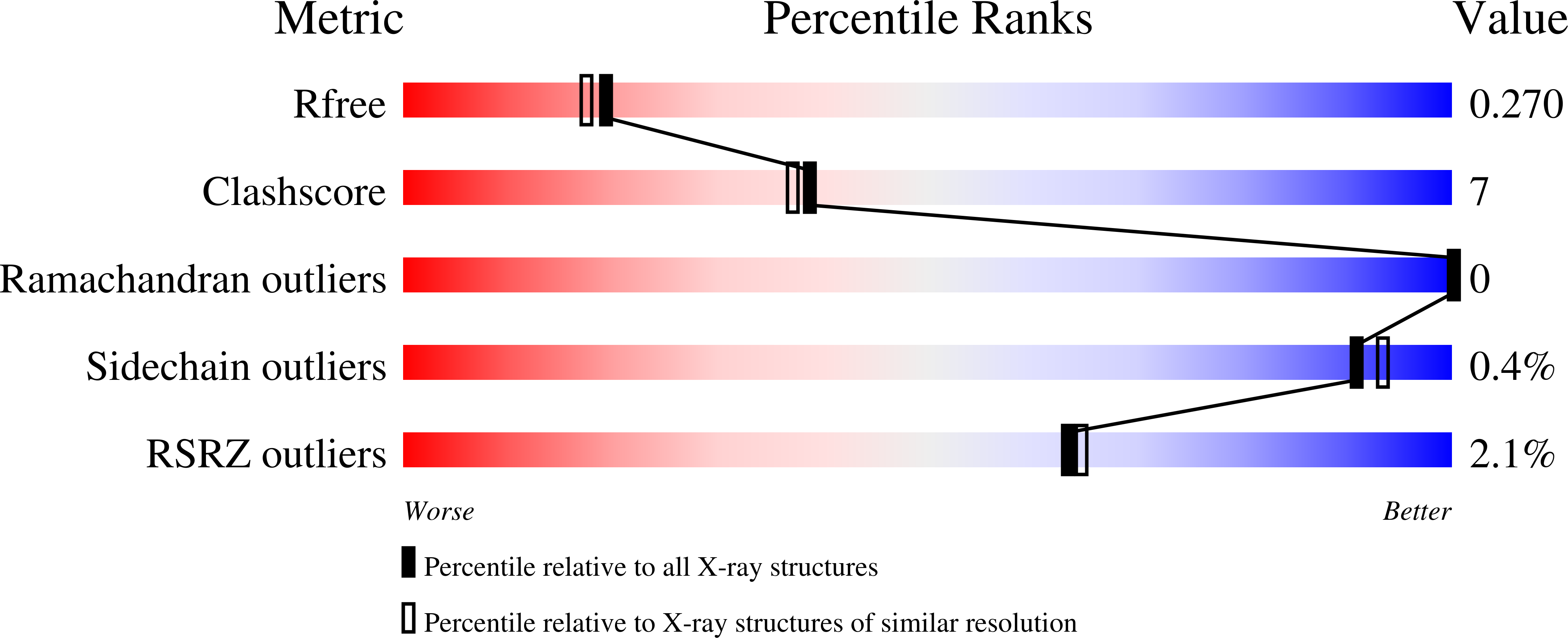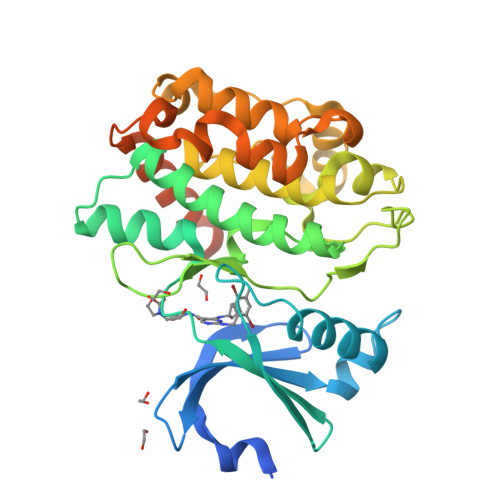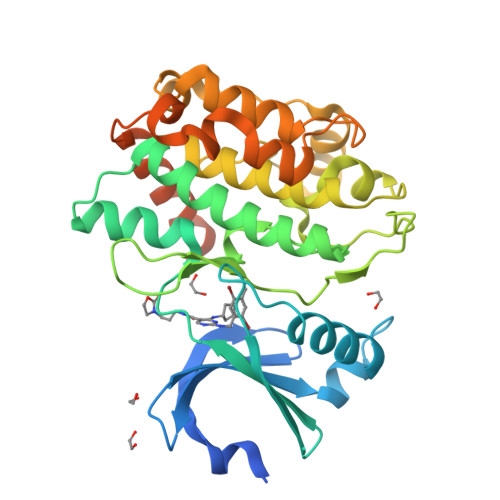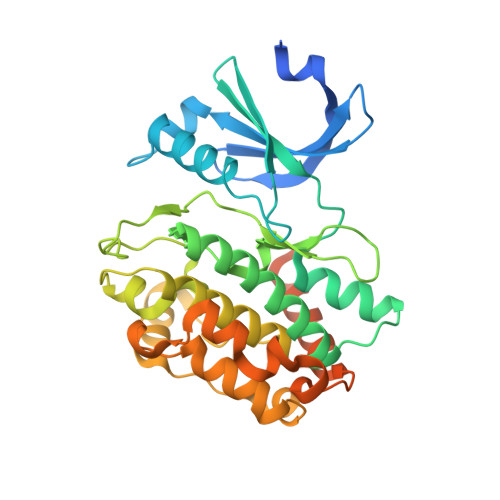Design and Development of a Chemical Probe for Pseudokinase Ca 2+ /calmodulin-Dependent Ser/Thr Kinase.
Russ, N., Schroder, M., Berger, B.T., Mandel, S., Aydogan, Y., Mauer, S., Pohl, C., Drewry, D.H., Chaikuad, A., Muller, S., Knapp, S.(2021) J Med Chem 64: 14358-14376
- PubMed: 34543009
- DOI: https://doi.org/10.1021/acs.jmedchem.1c00845
- Primary Citation of Related Structures:
7OAI, 7OAJ, 7OAK, 7OAL, 7OAM - PubMed Abstract:
CASK (Ca 2+ /calmodulin-dependent Ser/Thr kinase) is a member of the MAGUK (membrane-associated guanylate kinase) family that functions as neurexin kinases with roles implicated in neuronal synapses and trafficking. The lack of a canonical DFG motif, which is altered to GFG in CASK, led to the classification as a pseudokinase. However, functional studies revealed that CASK can still phosphorylate substrates in the absence of divalent metals. CASK dysfunction has been linked to many diseases, including colorectal cancer, Parkinson's disease, and X-linked mental retardation, suggesting CASK as a potential drug target. Here, we exploited structure-based design for the development of highly potent and selective CASK inhibitors based on 2,4-diaminopyrimidine-5-carboxamides targeting an unusual pocket created by the GFG motif. The presented inhibitor design offers a more general strategy for the development of pseudokinase ligands that harbor unusual sequence motifs. It also provides a first chemical probe for studying the biological roles of CASK.
Organizational Affiliation:
Structural Genomics Consortium (SGC), Buchmann Institute for Life Sciences (BMLS), Goethe University Frankfurt am Main, Max-von-Laue-Str. 15, Frankfurt am Main 60438, Germany.























